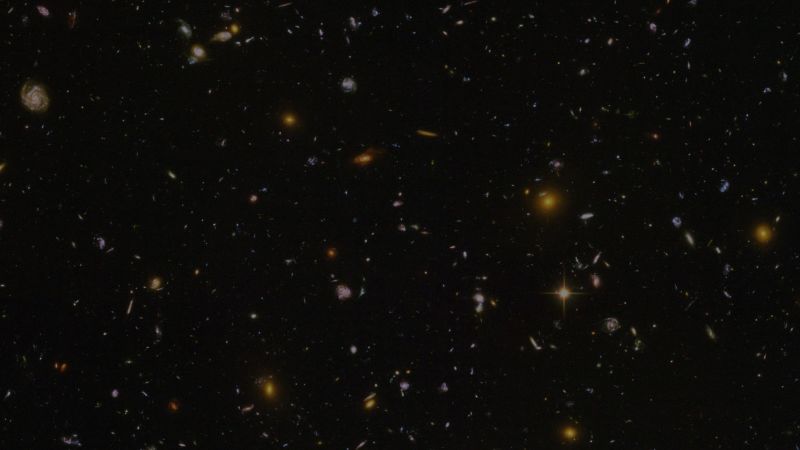A glowing worm moon will light up the sky on Monday with a celestial performance in store for people venturing out in the early morning hours — a penumbral lunar eclipse.
March’s full moon, referred to as the worm moon by the Farmers’ Almanac due to its proximity to the spring equinox, will be at its fullest at 3 a.m. ET.
A few hours earlier, starting at 12:53 a.m. ET, according to EarthSky, the moon will be almost perfectly aligned with the sun and Earth, causing the outer edge of Earth’s shadow, known as the penumbra, to be cast onto the glowing orb.
The greatest eclipse will be at 3:12 a.m. ET, when the moon will appear to be slightly darker than usual, said Dr. Shannon Schmoll, director of the Abrams Planetarium at Michigan State University.
“It’ll be almost a gradient of darkening happening from one side of the moon to the other. It’s not going to be a super dramatic change in what we see in the moon,” Schmoll said. “But if you’re sitting there watching it, you might notice some slight variations in brightness.”
The worm moon — named by Native American tribes in reference to the beetle larvae and other creatures that emerge from hibernation in the spring — will be visible to everyone across the world, since the moon will appear to be full for a couple of days.
However, the penumbral eclipse will only be visible to those who are on the night side of Earth when the event occurs, including Europe, North and East Asia, Australia, Africa, North America and South America. The lunar eclipse will finish at 5:33 a.m. ET, according to EarthSky.
Related article What to expect during April’s total solar eclipse
The penumbral eclipse comes about two weeks before a total solar eclipse that will cross Mexico, the United States and Canada on April 8. Lunar and solar eclipses always come in pairs due to the period when the sun, Earth and moon stay aligned, Schmoll said. While the full moon will be caught in Earth’s shadow during this penumbral eclipse, the moon’s next new moon phase will allow for the conditions needed for a solar eclipse, when the moon will be in between the sun and Earth and thus block the face of the sun from view.
Eclipse season
An “eclipse season” is the approximate 35-day period that occurs every six months, near the equinoxes, when the near-perfect alignment of the three celestial bodies needed for eclipses occurs, according to NASA.
A lunar eclipse does not happen monthly during each full moon because the moon’s orbital plane is tilted by about 5 degrees, so for most full moons, the shadow of the Earth will be just below or above the moon, Schmoll said.
Related article Some perplexing animal mysteries stumped scientists during the 2017 eclipse. Here’s why
While a penumbral eclipse is not as dramatic as a total lunar eclipse with the moon appearing an eerie red, there is no special equipment required to view a lunar eclipse such as the viewing glasses needed for a solar eclipse, Schmoll said, allowing for lunar eclipses to be viewed with the naked eye.
“You pretty much just need to be outside with a clear view of the moon when it’s happening,” Schmoll added. “(Eclipses are) always a good excuse to go outside and try to look at the sky and appreciate where we are in the universe, and what we are able to observe from our planet.”
Solar and lunar eclipses
While the most highly anticipated of the four eclipse events occurring in 2024 is the total solar eclipse on April 8, an annular solar eclipse will occur on October 2 over parts of South America. This type of eclipse is similar to a total solar eclipse, except the moon is at the farthest point in its orbit from Earth, so it can’t completely block the sun. Instead, annular solar eclipses create a “ring of fire” in the sky as the sun’s fiery light surrounds the moon’s shadow.
Meanwhile, a partial lunar eclipse, in which Earth moves between the sun and the full moon without being perfectly aligned, will appear over Europe and much of Asia, Africa, North America and South America between September 17 and 18.
Check Time and Date’s website to see when each of these eclipses will appear.
Related article Explosive star event will create once-in-a-lifetime sight in the sky. Here’s how to see it
More full moons this year
Of the 12 full moons in 2024, the September and October lunar events will be considered supermoons, according to EarthSky.
Definitions of a supermoon can vary, but the term generally denotes a full moon that is closer to Earth than normal and thus appears larger and brighter in the night sky. Some astronomers say the phenomenon occurs when the moon is within 90% of perigee — its closest approach to Earth in orbit.
Here are the remaining full moons of 2024:
• April 23: Pink moon
• May 23: Flower moon
• June 21: Strawberry moon
• July 21: Buck moon
• August 19: Sturgeon moon
• September 17: Harvest moon
• October 17: Hunter’s moon
• November 15: Beaver moon
• December 15: Cold moon
Related article Astronomers discover 3 previously unknown moons orbiting planets in our solar system
Meteor showers of 2024
Skygazers can look forward to a multitude of meteor showers this year, according to the American Meteor Society. Here are the dates when meteor events are expected to peak this year.
• Lyrids: April 21-22
• Eta Aquariids: May 4-5
• Southern delta Aquariids: July 29-30
• Alpha Capricornids: July 30-31
• Perseids: August 11-12
• Draconids: October 7-8
• Orionids: October 20-21
• Southern Taurids: November 4-5
• Northern Taurids: November 11-12
• Leonids: November 17-18
• Geminids: December 13-14
• Ursids: December 21-22







































